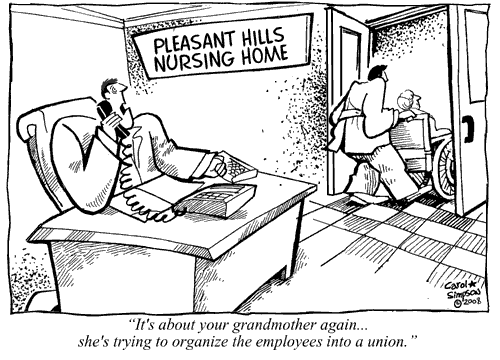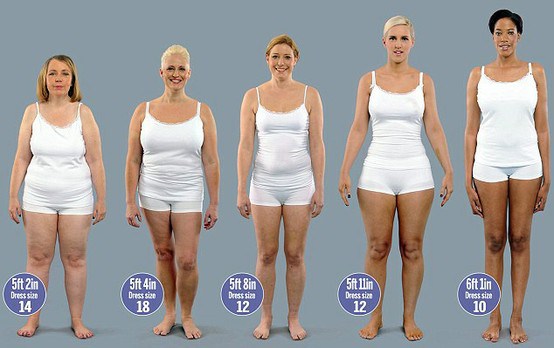On September 8, 2016, Deloitte LLP announced it would grant 16 weeks of paid leave to employees who provide family caregiving not only to new children, but to older children, parents, and spouses. This is an enormous improvement in the U.S. … Continue reading
Category Archives: Aging
US News and World Report recently published an article summarizing the results of a study of Veterans Affairs hospitals. The study found that patients with cancer or dementia received better end-of-life counseling, more palliative care, and better end-of-life planning on the … Continue reading
Have you ever wanted to tell the world you are a feminist without speaking? Have you ever wanted a t-shirt that shows what intersectional feminism can by by depicting Rosie the riveter as women of color, women wearing headscarves, tall … Continue reading
I saw a lot of surprise on social media about the Alzheimer’s Society report including that data that only 45% of patients and their caregivers are informed of their Alzheimer’s diagnosis. News reports went so far as to put out … Continue reading
Oliver Sacks gave the Beatty lecture on the mysteries of the brain at McGill University in Montréal in October of 1997. I had the pleasure of being one of the many attending this exciting lecture. I write “exciting” as Sacks … Continue reading
Our health care system is well honed to fight disease, but poorly designed to meet the basic safety needs of seriously ill patients and their families. We can do both. We must. People who are approaching the end of life … Continue reading
There have been recent reports on the over-medicalization of older individuals in nursing homes and assisted living residences. This problem is not a new one. Just imagine: you are overworked and there is not enough staff to take care of … Continue reading
Feminist scholars have, for many years now, analyzed and interpreted the problems of body image that plague Western culture. Susan Bordo, Sandra Lee Bartky, Susie Orbach, and bell hooks are only a couple examples of prominent feminists who have examined the problem of how women understand their bodies, the cultural expectations for women’s bodies, and how these expectations produce a skewed body image that has little to do with “health.”
Similarly, what constitutes a healthy female body is also a contentious issue, as more recent explorations of health perceptions have shown us. A recent Tumblr post explicitly challenges some of the standard tools of Western medicine for determining healthy body weight.
Foz Meadows’s post, entitled “Female Bodies, a Weighty Issue,” made the rounds recently on social media. In her post, she argues that we as a society are still obsessed with thinness and ideal female body types that have little to do with lived reality. She explodes the concept of BMI as an accurate measurement of health, considers the problematic institution of clothing sizes for women, and examines the lack of linkage between weight and health. She concludes by arguing that “fat” simply means “not thin,” thus anticipating the criticism of many who are quick to point out that being overweight or obese can have detrimental effects on one’s long-term health. The issue is not about obesity; the issue, for Meadows, is that women who do not embody an ideal of female beauty (unnatural and unattainable for the majority of women) are often perceived as fat.
Continue readingOver at Feministing, Katie has a pretty solid analysis of the recent case of a woman in an independent living facility who was unambiguously raped by a male employee. After reporting the rape, to which the perpetrator confessed, the survivor … Continue reading

Image Credit: Carol Simpson
Recently, Craig Klugman wrote a thought-provoking blog entry over at bioethics.net on long-term care options for elderly persons. While humane ones do exist that are designed for human flourishing, such as a new chain of purpose-designed communities where elderly folks have access to developing new skills in the visual and performing arts, these are often very expensive.
More often, facilities which provide in-patient nursing care still significantly “warehouse” their residents, providing medical care but treating the elderly as people waiting for death rather than persons who can still grow and learn and contribute. National Public Radio has an ongoing investigative news series called “Home or Nursing Home: America’s Empty Promise to Give the Elderly and Disabled A Choice.” In that series, NPR reporters chronicle many of the same kinds of difficulties Klugman discusses in his blog entry. Long-term care facilities have notoriously high staff turnover rates, in part due to difficult working conditions but also due to low pay. In-home careworkers are similarly poorly paid. 90% of these direct care workers are women, and earn an average of approximately $17,000/year. This is due in part to the fact that the federal law governing wage and overtime protections, the Fair Labor Standards Act (FLSA), explicitly does not cover home care workers. Even facility-based care workers receive very little pay.
Continue readingA recent article on the CBC website with the headline, Seniors Stay Home Longer in U.S. with Simple Fixes is apparently meant to point out to Canadians that our neighbors to the south are once again ahead of the game. … Continue reading
In the era of biocitizenry—when how you manage your medical risk is part and parcel of good citizenship—identity is a crucial mediator. Who you are is who you are like, and who you are like is whose narrative you can slip into: celebrity greases the deal. Whether that narrative is a comfortable glove that fits you just right, or a bus you jump on in a hurry, only to realize later that it took you just where you needed to go—or in the opposite direction—may be both a metaphysical question, and one with real consequences.
Angelina Jolie’s revelation in the NY Times of her carrier status for the BRCA mutation and of her choice of prophylactic double mastectomy was well-measured. She highlighted several important facts that frame the diversity of people’s experience and choices to set a context for her own moving personal narrative, such as that the BRCA gene mutation is responsible for a small share of breast cancers, that access to the test is hindered by its cost (Myriad’s patent as the most significant driver of that cost went unnamed), that the biggest disease burden is borne in lower-income countries, that the choice of approaches to prevention is personal and best discussed with your physician. Her physician blogged the treatment regime, but only after the news cycle and blogosphere were forced to content themselves for a day with the policy issues of patents (read Leila Jamal at The Berman Institute’s Bioethics Bulletin on the Myriad patents and the case before the Supreme Court), access (read s.e. smith’s harrowing account at xojane of knowing her BRCA status but being unable to afford preventive treatment), and what may have been the source of her self-reported 87% lifetime risk of breast cancer (Tiffany O’Callaghan interviewing Allison Kurian at The New Scientist), as well as the misogyny flung Jolie’s way (you may want to skip the tumblrs filling with variants of the “poor Brad” meme from twitter).
Most women choosing double mastectomy as a prophylaxis for breast cancer are not women with the BRCA mutation. If there were a sweepstakes for bravery, Jolie’s worthy competitor would be Peggy Orenstein, who wrote two weeks ago in the NY Times Magazine about how her advocacy for early detection via mammography screening was transformed as she came to understand the depth and extent of breast cancer overdiagnosis. The issue of overdiagnosis, to be clear, isn’t about the distress and uncertainty that comes with false positives. It’s about unnecessary medical treatment: surgery, radiation, and chemotherapy for breast cancers that would never have killed if left alone. The recent Canadian Task Force on Preventive Health Care update of the similar US body’s guidelines quantifies overdiagnosis for women undergoing screening in their 40s as 10 cancers treated unnecessarily for every life saved. Jolie faces visceral misogyny from her so-called fan base; Orenstein faces the ire of the screening advocates. I’m not sure which is worse.
Continue reading


